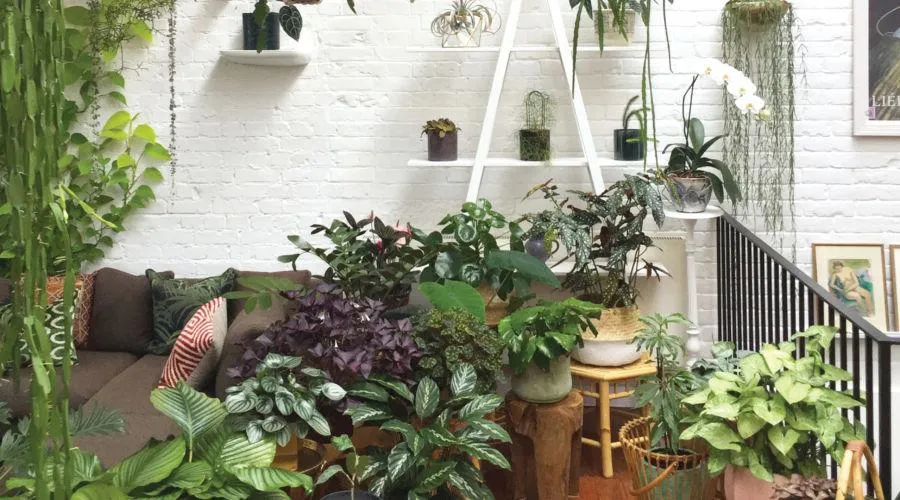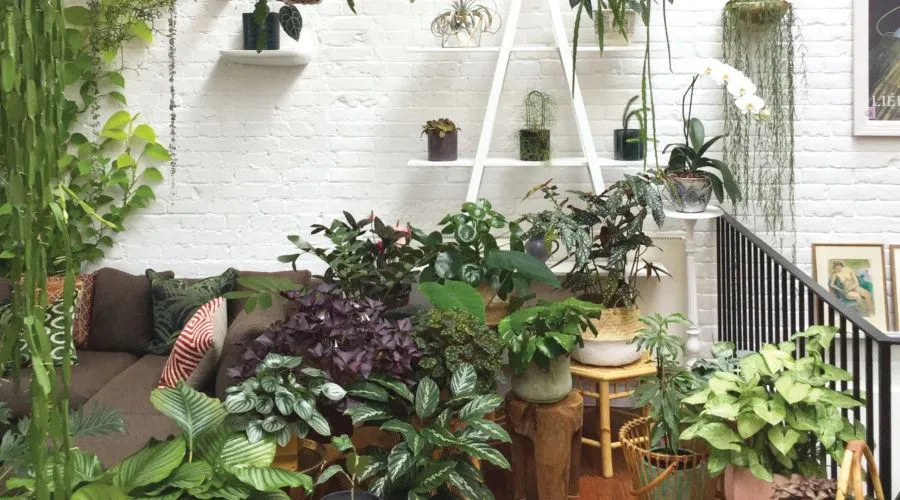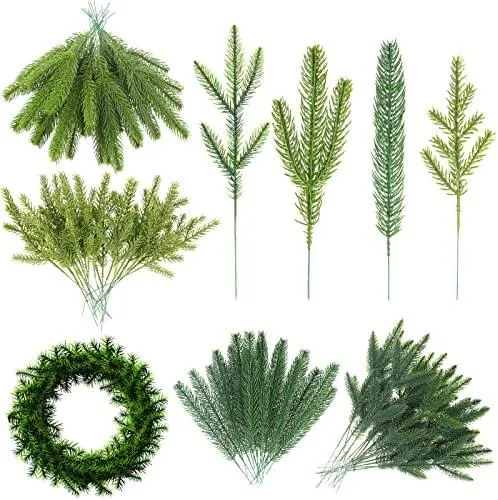The Many Benefits of Decorating With Indoor Wall Plants
Indoor wall plants can add natural beauty, color, and life to any home or office space. Whether you live in an apartment with limited floor space or want to spruce up bare walls, incorporating plants onto vertical surfaces is an easy and impactful decorating solution. Beyond their aesthetic appeal, wall-mounted greenery also provides some vital functional benefits. In this article, I’ll explore the top reasons for decorating with indoor wall plants and tips for successfully caring for them.
They Improve Indoor Air Quality
One of the most compelling arguments for indoor wall plants is their ability to purify the air in your living environment. According to research, common houseplants like pothos, English ivy, and spider plants are excellent at removing toxins like formaldehyde, benzene, and trichloroethylene from the air. These are all compounds often found in building materials, cleaners, and other manufactured products used indoors. By hanging plants where air circulates most, like in your home’s entryway, you’re distributing natural air-filtering greenery throughout your space. The NASA Clean Air Study found some wall-mounted plants can eliminate up to 87% of toxins in a sealed room in just 24 hours!
They Boost Mood and Reduce Stress
Spending time around plants and greenery has been shown to lower levels of cortisol (the stress hormone) and reduce feelings of anxiety. One theory is that planting stimulates the parasympathetic nervous system which induces relaxation. Several studies have linked simply looking at indoor foliage to decreases in perceived stress, mental fatigue, and blood pressure. Incorporating wall plants throughout your home creates a soothing, calming atmosphere especially in high-traffic areas like the living room, kitchen, and hallways. The mood-lifting benefits are probably why so many offices use decorative plants too!

They Add Visual Interest to Bare Walls
Especially in small living spaces, wall-mounted plants make great use of vertical real estate that would otherwise sit empty. Hanging planters or wall shelves filled with greenery instantly liven up plain walls, drawing the eye upwards. Pretty much any style of home, from modern industrial to rustic farmhouse, can benefit aesthetically from wall-trained vines, succulents in hanging pots, or mounted tropical foliage. The variety of shapes, colors, and textures plants offer also makes them a surprisingly versatile design element suitable for both traditional and contemporary interior schemes. In my experience, wall displays of plants elevate any room from drab to vibrant.
They’re Low Maintenance Decor
While plants do require some care, many popular varieties chosen for indoor walls are quite low fuss compared to floor placements. I find wall plants tend to be hardier and more forgiving of occasional neglect. This makes them suitable for households with busy lifestyles or frequent travelers looking to avoid worrying about a plant sitter. As long as they’re not in direct sun, many will thrive with just an occasional watering. Mounting plants up high also deters pesky pets and children from disturbing roots or leaves. Due to less soil volume, wall planters likewise hold moisture for longer periods between waterings. Overall, the ease of wall plant maintenance earns them points as functional and low-key home decor.
They’re an Affordable Decor Upgrade
Speaking of functionality, indoor wall plants offer beauty on a budget too. Even if you live in a rented apartment or condo with limited furniture options, hanging a few pots of greenery adds natural style that elevates your space without the hefty price tag. DIY wall planters made from items like wood boards, shelving brackets, or wire baskets provide an inexpensive mounting solution. Succulents and foliage cuttings taken from friends are a cheap way to start a collection as well. Eventually, your wall gallery will grow into a customized organic work of art. From my experience as both a renter and homeowner, planting the walls is one of the most budget-friendly and impactful decor upgrades around.

Tips for Successful Indoor Wall Plant Care
Now that we’ve covered the top perks of interior wall plants, here are some tips gleaned from my experience over years of keeping them happy at home and in the office:
- Choose the right plant. Consider light exposure and water needs when selecting varieties suitable for your wall conditions. Foliage like pothos, philodendron, spider plant, and ivy thrive with indirect sunlight.
- Mount securely. Use sturdy hooks, brackets, shelves, or plank mounts strong enough to hold pot weight for long-term stability. Drill into wall studs when possible for extra reinforcement.
- Water properly. Till soil until fully saturated when dry 1-2 inches down, then allow excess to drain. Some wall plants prefer almost-dry conditions between watering, so choose watering strategy for each.
- Fertilize occasionally. Feeding wall-mounted foliage every couple months in spring/summer using diluted liquid houseplant food per package instructions promotes lush growth.
- Dust leaves. Use a soft-bristled brush to gently remove accumulated dust which can block light absorption and transpiration.
- Prune and shape. Train vining plants vertically and trim leggy bits to maintain compact forms fitting wall placements.
With the right plant pairing and location, wall-mounted greenery adds ambiance and appeal to any interior décor in low-maintenance way. From my experience decorating small spaces, it’s a trick I always recommend for maximizing natural style at home or work. With a little patience while the vines grow in, wall plant displays become beautiful living artwork to appreciate for years.
Do you have any other questions after reading through the benefits of indoor wall plants? Feel free to reach out if you need help selecting plants suited to your conditions or coming up with display ideas. I’d be happy to offer more of my experience and advice on making the most of this simple yet impactful decor trend.

Top Indoor Wall Plants For Any Decor Style
| Plant | Light Needs | Care Level | Size |
|---|---|---|---|
| Pothos | Low | Low | Small to Medium |
| Snake plant | Low | Low | Medium to Large |
| Peace lily | Medium | Low | Small to Medium |
| Spider plant | Medium | Low | Small to Medium |
| Philodendron | Medium | Low | Small to Large |
FAQ
-
What kinds of plants do well indoors?
There are quite a few plants that basically do really well inside homes and apartments. Things like pothos, snake plants, spider plants, peace lilies, and ZZ plants are very forgiving and will pretty much grow no matter what.
-
Do plants need sunlight?
Most indoor plants do need at least some sunlight every day. Otherwise, they may kind of fade and wither away. Plants use sunlight to make their own food through photosynthesis. So the more light a plant gets, the healthier it will be. Nevertheless, not all plants need direct sun – some do fine in low-light areas too.
-
How often should indoor plants be watered?
The frequency of watering plants varies greatly depending on the type of plant and the conditions. As a basic rule, you’ll want to check soil moisture by sticking your finger in the soil. If the top inch or two feels dry, it’s time to water. However, plants like succulents and cacti only need water every couple weeks. Asking friends with green thumbs is a smart move if you have doubts!

-
What is the best potting soil for indoor plants?
Most indoor plant experts recommend a well-draining potting mix to preventroot rot from overwatering. Strongly suggested options contain ingredients like peat moss or coir to retain moisture but also perlite or vermiculite for drainage. Potting soils labeled “indoor” or “houseplant” seem ideal. On the other hand, if a plant needs very dry soil, you may use an orchid bark or succulent mix.
-
How often should indoor plants be fertilized?
The frequency of fertilizing indoor plants depends on the type of fertilizer and the plant. In general, during the spring and summer you’ll want to fertilize once a month. In fall and winter, every other month is usually sufficient. Liquid or water-soluble fertilizers are applied each time you water. Granular varieties are top-dressed and dissolved by moisture. Pay attention to instructions and go lighter on blooming or leafy plants.
A well-designed container can upgrade any room in the home. Perhaps planted pots grouped by a window create a stunning vignette. Terra cotta, glazed ceramic, or those made from recycled goods basically work well. Exterior plansters filled with annuals outside the door also provide a pop of color. Green, leafy plants breathe life into all indoor spaces. Even if intimidated by a black thumb from failures past, giving greenery another try may amaze! Sources like YouTube are filled with advice for novice plant parents. With experimentation comes understanding and success. What are you waiting for – start your indoor jungle today!
